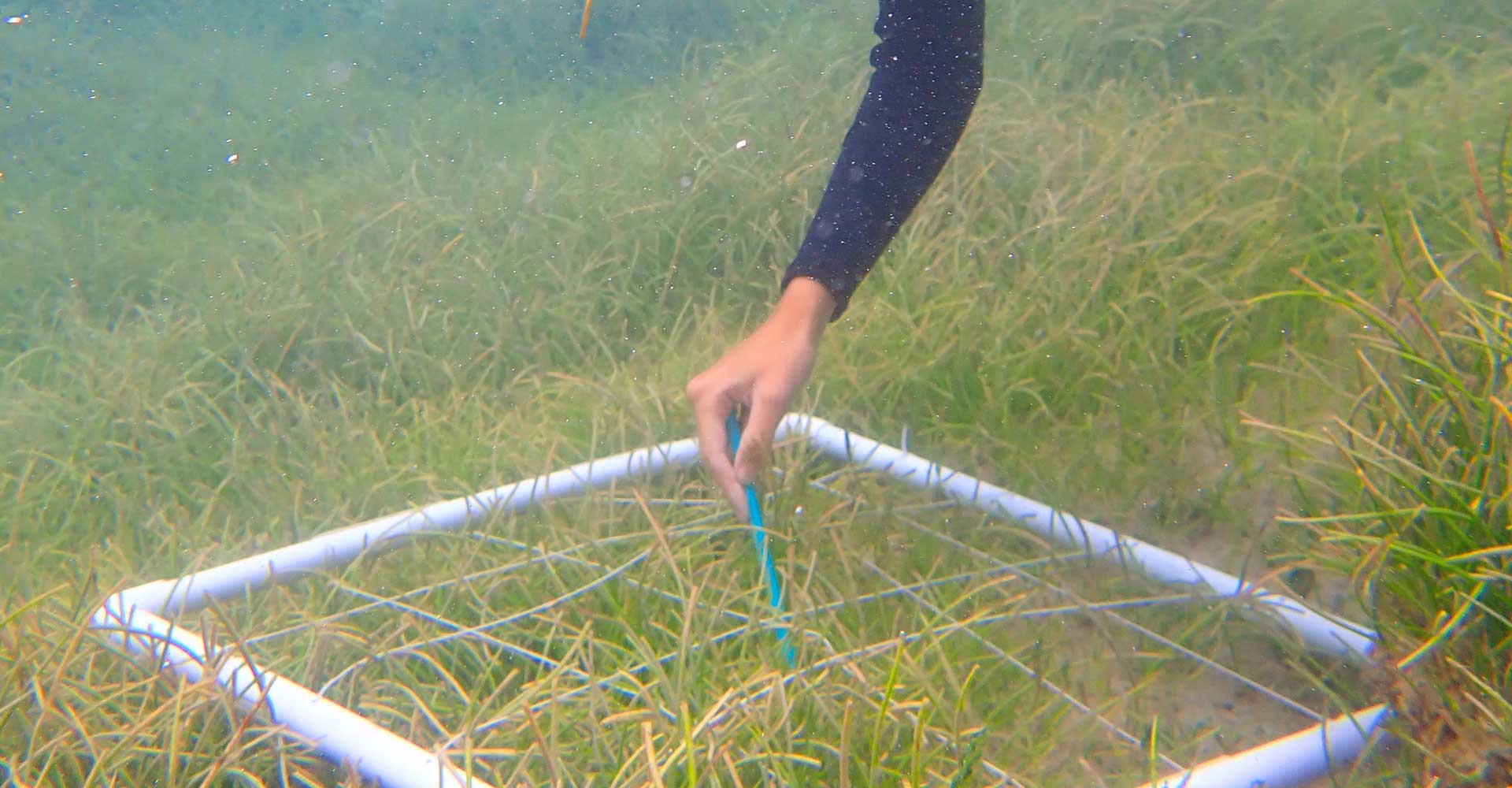Boosting Scotland's Coastline: Seagrass Restoration Bids

Table of Contents
The Ecological Importance of Seagrass Restoration in Scotland
Seagrass meadows are biodiversity hotspots, providing critical habitat for a multitude of species and supporting a thriving marine ecosystem. Their restoration is paramount for the health of Scotland's waters.
Biodiversity Hotspots: Nurseries of the Sea
Seagrass acts as a vital nursery for commercially important fish species, providing shelter and food for juveniles. The intricate structure of the seagrass beds creates a complex habitat that supports a rich diversity of invertebrates, crustaceans, and algae. This biodiversity underpins the entire marine food web.
- Key species dependent on seagrass: Cod, plaice, seahorses, scallops, various crustaceans, and numerous species of algae.
- Impact of seagrass loss: Loss of seagrass leads to a decline in fish populations, reduced biodiversity, and disruption of the delicate balance of the marine ecosystem.
- Trophic cascades: The loss of seagrass initiates a chain reaction, affecting the entire food web, from the smallest plankton to top predators.
The Economic Benefits of Seagrass Restoration Projects
Investing in seagrass restoration delivers significant economic returns, far outweighing the initial costs. The benefits extend beyond environmental protection, offering tangible economic advantages for coastal communities.
Coastal Protection and Erosion Control: A Natural Barrier
Seagrass meadows act as natural buffers, absorbing wave energy and reducing coastal erosion. This protection is particularly crucial in the face of increasingly frequent and intense storms driven by climate change.
- Economic benefits: Reduced costs associated with coastal erosion and damage to infrastructure. Studies have shown significant cost savings for coastal communities by preventing erosion and damage to property.
- Protection of infrastructure: Seagrass meadows help protect harbors, ports, and other vital coastal infrastructure from damage.
- Increased property values: Healthy coastlines with robust seagrass meadows can increase property values in coastal communities.
Carbon Sequestration and Climate Change Mitigation: Blue Carbon
Seagrass meadows are incredibly effective at sequestering carbon, acting as significant "blue carbon" sinks. Their ability to capture and store atmospheric carbon dioxide is far greater than many terrestrial ecosystems, making them crucial allies in mitigating climate change.
- Carbon sequestration capacity: Seagrass meadows store carbon at a rate comparable to, and sometimes exceeding, that of tropical rainforests.
- Blue carbon process: Seagrass captures CO2 through photosynthesis, storing it in its leaves, roots, and surrounding sediments.
- Funding opportunities: The carbon sequestration potential of seagrass restoration projects can attract funding through carbon credit schemes and environmental initiatives.
The Process of Applying for Seagrass Restoration Bids in Scotland
Securing funding for seagrass restoration is vital for project success. Several organizations offer grants and support for environmental initiatives.
Identifying Funding Opportunities: Sources of Support
Various funding bodies provide grants specifically for seagrass restoration and broader marine conservation projects in Scotland.
- Key organizations: Look to Scottish Natural Heritage (now NatureScot), Marine Scotland, the European Maritime and Fisheries Fund (EMFF), and various environmental charities and trusts. Their websites offer details on current funding opportunities and application processes.
- Application process: Grant applications typically involve submitting a detailed proposal outlining project objectives, methodology, budget, and expected outcomes. Timelines vary between organizations.
- Eligibility criteria: Each funding body has specific requirements and eligibility criteria. Carefully review guidelines before submitting an application.
Developing a Successful Seagrass Restoration Proposal: A Winning Strategy
A strong proposal is key to securing funding. It needs to clearly demonstrate the project's feasibility, environmental impact, and long-term sustainability.
- Key elements: A clear project title, detailed objectives, a robust methodology, a realistic budget, risk assessment, a monitoring and evaluation plan, and clear outcomes and deliverables.
- Seagrass data: Include data on seagrass distribution, potential restoration sites, and baseline ecological surveys. A thorough environmental impact assessment is essential.
- Long-term sustainability: Emphasize the long-term sustainability of the project, including maintenance and monitoring plans.
Conclusion
Seagrass restoration offers an unparalleled opportunity to enhance Scotland's coastline, boosting biodiversity, strengthening coastal resilience, and mitigating climate change. The economic benefits are significant, offering substantial returns on investment. By securing successful seagrass restoration bids, we can protect this vital ecosystem and ensure the long-term health and prosperity of Scotland's coastal communities. Apply for seagrass restoration bids today, support seagrass restoration initiatives, and help protect Scotland's coastline. Let's work together to ensure a vibrant future for Scotland’s seas, safeguarding the precious seagrass meadows that are integral to its health and vitality.

Featured Posts
-
 Max Verstappen Welcomes Baby Name And Details Revealed
May 05, 2025
Max Verstappen Welcomes Baby Name And Details Revealed
May 05, 2025 -
 Analyzing The 2025 Kentucky Derby What Pace To Expect
May 05, 2025
Analyzing The 2025 Kentucky Derby What Pace To Expect
May 05, 2025 -
 Can A Horror Reboot Topple A New Stephen King Movie A Comparative Analysis
May 05, 2025
Can A Horror Reboot Topple A New Stephen King Movie A Comparative Analysis
May 05, 2025 -
 Britains Got Talent Interrupted Ant And Decs Double Show Halt
May 05, 2025
Britains Got Talent Interrupted Ant And Decs Double Show Halt
May 05, 2025 -
 The Paddy Pimblett Dustin Poirier Retirement Debate
May 05, 2025
The Paddy Pimblett Dustin Poirier Retirement Debate
May 05, 2025
Latest Posts
-
 Colonial Downs Virginia Derby Stones Announcement And What It Means For Horse Racing
May 05, 2025
Colonial Downs Virginia Derby Stones Announcement And What It Means For Horse Racing
May 05, 2025 -
 Stones Announcement Key Details On The Upcoming Virginia Derby At Colonial Downs
May 05, 2025
Stones Announcement Key Details On The Upcoming Virginia Derby At Colonial Downs
May 05, 2025 -
 Virginia Derby Update Stones Announcement Signals Exciting Colonial Downs Meet
May 05, 2025
Virginia Derby Update Stones Announcement Signals Exciting Colonial Downs Meet
May 05, 2025 -
 Colonial Downs Prepares For Virginia Derby Stones Announcement Imminent
May 05, 2025
Colonial Downs Prepares For Virginia Derby Stones Announcement Imminent
May 05, 2025 -
 Stone To Announce Virginia Derby Meet At Colonial Downs A Major Racing Update
May 05, 2025
Stone To Announce Virginia Derby Meet At Colonial Downs A Major Racing Update
May 05, 2025
